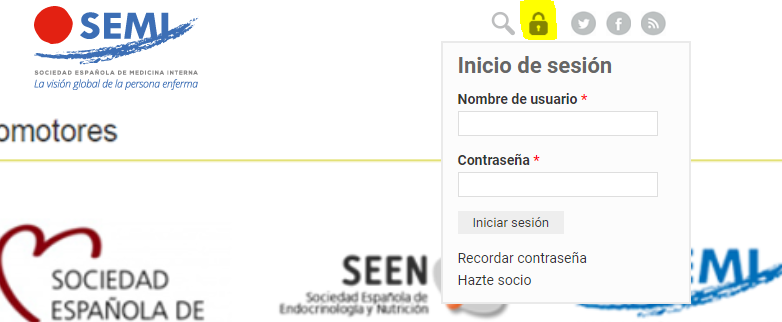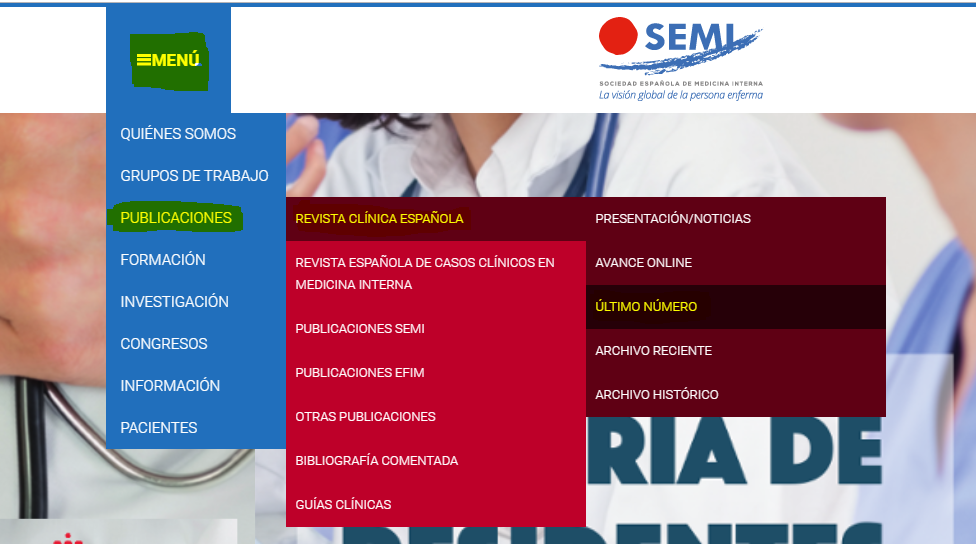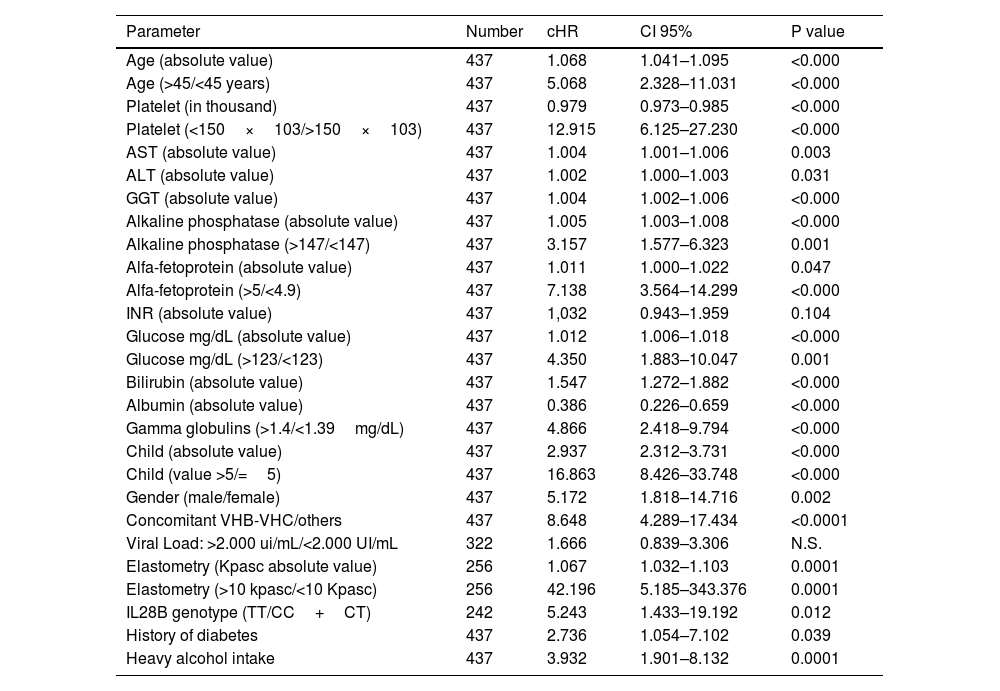To identify risk factors associated with liver complications in patients with chronic hepatitis B infection in an unselected cohort of hepatitis B patients in southern Spain.
MethodsA prospective open-cohort study was conducted on 437 patients with uncomplicated chronic hepatitis B infection in two hospitals in Málaga, southern Spain. The follow-up time ranged from 0.5 to 31.5 years (mean: 13.8±9.5 years; median: 11.4 years). The aim of this study was to evaluate the occurrence of the initial liver complication during follow-up, which is defined as the emergence of liver cancer or complications resulting from portal hypertension. Survival curves were obtained using a time-to-event method through Kaplan-Meier analysis. Multivariate Cox regression was conducted to estimate the hazard ratios of risk factors associated with complications after adjusting for multiple variables. The follow-up of the patients was carried out under conditions of usual clinical practice.
Based on the weighted adjustment of these factors, we developed a Hepatitis B Complication Score (HBCS) from which it was possible to identify patients with low and high risk of complications during follow-up.
Results33 out of 437 patients (7.55%) experienced liver complications, 12 (36.3%) were secondary to portal hypertension, and 21 patients (63.7%) developed liver cancer. A Multivariate Cox regression identified the following independent risk factor: Age above 45 years: HR 7.10 (2.9–17.3); low platelet count: HR 4.88 (2.1–10.9); hepatitis C coinfection: HR 4.68 (2.0–10.9); Male gender: HR 4.64 (1.5–14.2); alkaline phosphatase above 147 UI/mL: HR 4.33 (2.0–8.9); and Child score above 5 points: HR 3.83 (1.7–8.4). The Risk of Complications Score (HBCS) was developed with a high predictive capacity AUROC 0.92 (0.87−0.97).
ConclusionAn HBCS score greater than 3.07 points identifies patients at high risk of developing complications and with an increased risk of liver and all-cause mortality.
Identificar factores de riesgo asociados al desarrollo de complicaciones hepáticas en pacientes con infección crónica por hepatitis B en una cohorte de pacientes con hepatitis B en el sur de España.
MétodoEstudio prospectivo de cohorte abierta sobre 437 pacientes con infección crónica por virus de hepatitis B no complicados, y que fueron seguidos en dos hospitales de Málaga. El rango de tiempo de seguimiento osciló entre 0,5 y 31,5 años (media: 13,8±9,5 años; mediana: 11,4 años). El objetivo de este estudio es evaluar la incidencia de primeras complicaciones hepáticas, definidas como la aparición de cáncer de hígado o complicaciones derivadas de la hipertensión portal. Se obtuvieron curvas de supervivencia utilizando el método de tiempo hasta el evento mediante el análisis de Kaplan-Meier. La regresión de Cox multivariante permitió estimar las hazard ratio de los factores de riesgo relacionados con la aparición de complicaciones después del ajuste para múltiples variables. El seguimiento de los pacientes se realizó bajo condiciones de práctica clínica habitual.
Basándonos en el ajuste ponderado de estos factores, desarrollamos un score de riesgo de complicaciones de la hepatitis B (HBCS) a partir del cual fue posible identificar a los pacientes con bajo y alto riesgo de desarrollo de las mismas durante el seguimiento.
Resultados33 de los 437 pacientes (7,55%) sufrieron complicaciones hepáticas, 12 (36,3%) fueron secundarias a hipertensión portal y 21 pacientes (63,7%) desarrollaron cáncer de hígado. La regresión multivariante de Cox identificó como factores de riesgo independientes: Edad superior a 45 años: HR 7,10 (2,9-17,3); recuento bajo de plaquetas: HR 4,88 (2,1-10,9); coinfección por hepatitis C: HR 4,68 (2,0-10,9); Sexo masculino: HR 4,64 (1,5-14,2); fosfatasa alcalina superior a 147 UI/mL: HR 4,33 (2,0-8,9); y puntuación de Child superior a 5 puntos: HR 3,83 (1,7-8,4). El Score de Riesgo de Complicaciones desarrollado (HBCS) mostró una alta capacidad predictiva AUROC 0,92 (0,87-0,97).
ConclusionesUna puntuación HBCS superior a 3,07 puntos identifica a los pacientes con alto riesgo de desarrollar complicaciones y con mayor riesgo de mortalidad hepática y mortalidad por cualquier causa.
Article
Diríjase desde aquí a la web de la >>>FESEMI<<< e inicie sesión mediante el formulario que se encuentra en la barra superior, pulsando sobre el candado.

Una vez autentificado, en la misma web de FESEMI, en el menú superior, elija la opción deseada.

>>>FESEMI<<<










